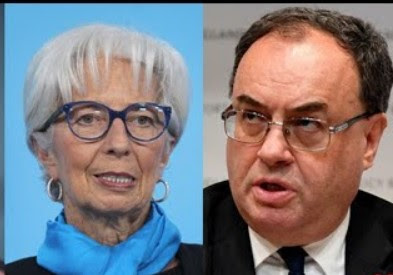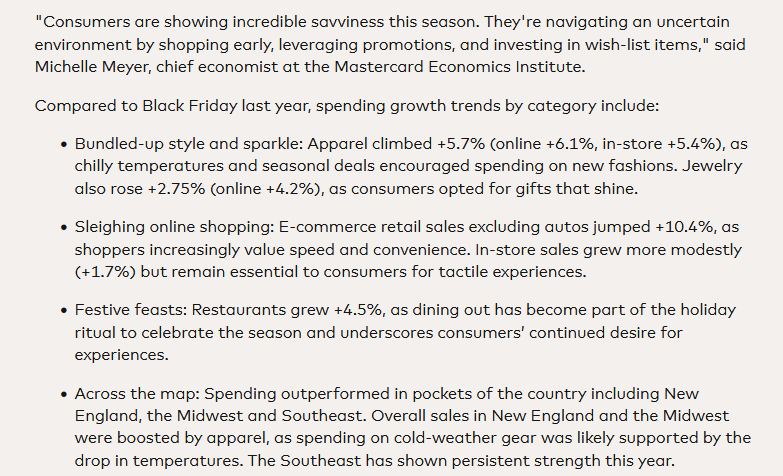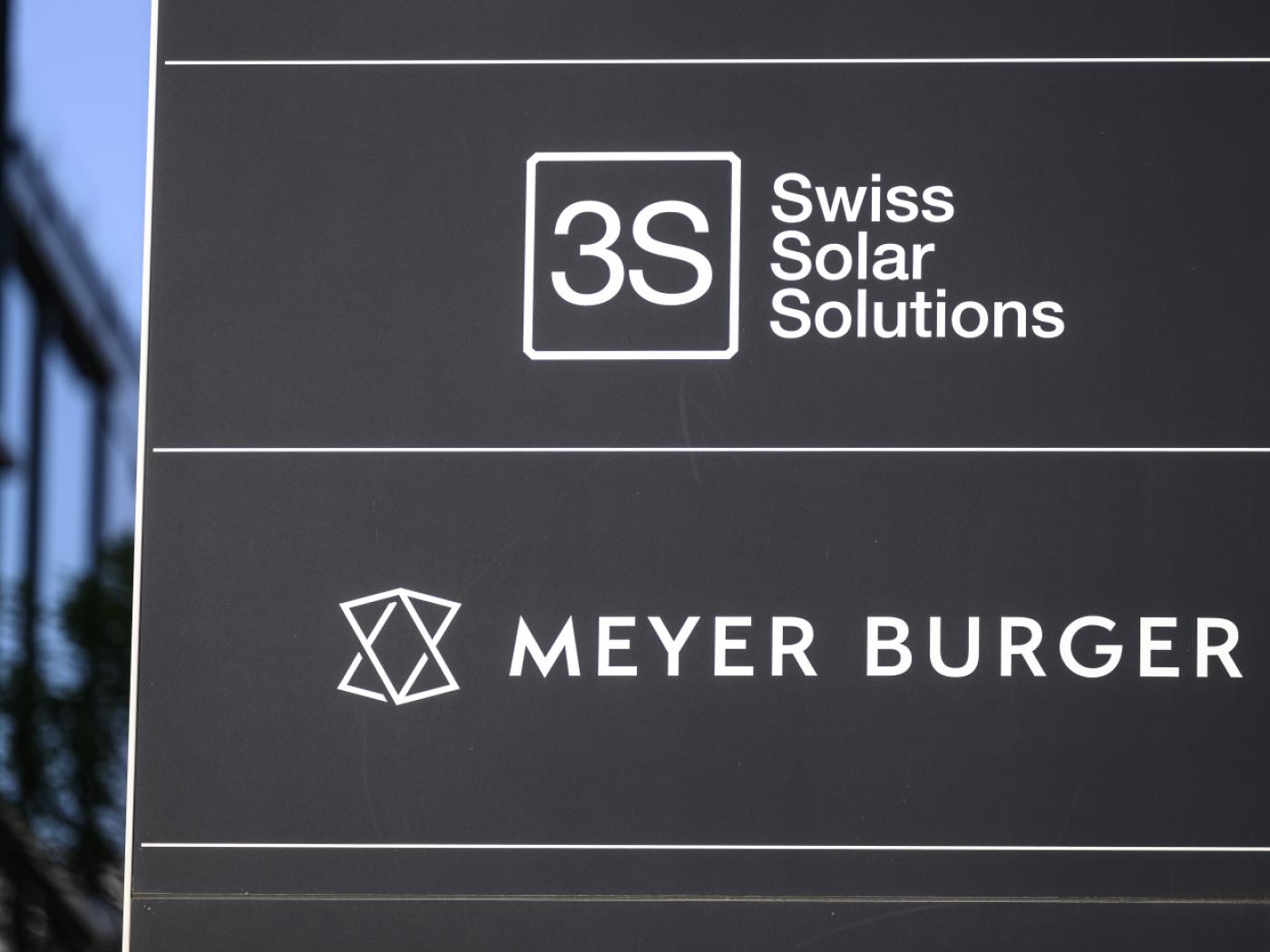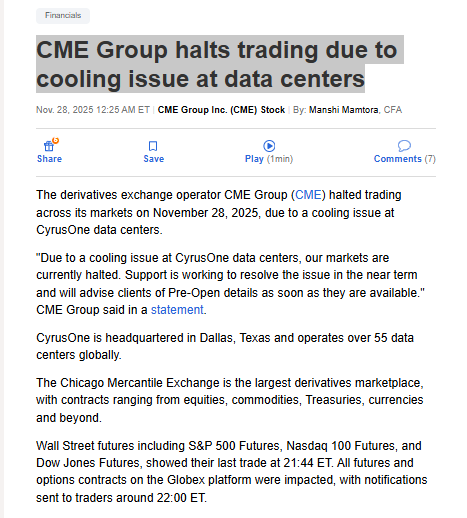 Overview: The failure of the Federal Reserve to push harder against the market’s dovish views and the easing of financial conditions encouraged a risk-on trade that saw the dollar and yields slump and equities rally. There has been limited follow-through dollar selling today, and a small recovery ahead of the Bank of England and European Central Bank meetings. The intraday momentum indicators suggest a weaker US dollar in the North American morning is likely. Despite the talk of a petro-yuan and the like, most Middle East countries, but Qatar, raised rates after the Fed, and Hong Kong Monetary Authority did as well.
Overview: The failure of the Federal Reserve to push harder against the market’s dovish views and the easing of financial conditions encouraged a risk-on trade that saw the dollar and yields slump and equities rally. There has been limited follow-through dollar selling today, and a small recovery ahead of the Bank of England and European Central Bank meetings. The intraday momentum indicators suggest a weaker US dollar in the North American morning is likely. Despite the talk of a petro-yuan and the like, most Middle East countries, but Qatar, raised rates after the Fed, and Hong Kong Monetary Authority did as well.
Most Asia Pacific bourses were mixed, but South Korea and Taiwan markets continued to rally and lead the region. Europe’s Stoxx 600 is snapping a three-day drop and is recouping it in full of a 0.75% advance. US futures are mixed, with Meta’s earning helping to lift the Nasdaq. The S&P 500 futures are a little firmer and the Dow a bit softer. The rally in US Treasuries spilled over and are lifting European bonds today. The UK Gilts, which have been seeing strong foreign demand are on fire. The 10-year yield is off 10 bp today, falling to 3.20%. March WTI recorded an outside down day yesterday, falling to almost $76 a barrel. It is consolidating today in the lower end of yesterday’s range. Meanwhile, US natgas futures price is at its lowest level since early Q2 21.
Asia Pacific
After buying about JPY1.8 trillion (~$14 bln) of foreign bonds in the first two weeks of January, Japanese investors resumed their divestment in the second half of the month. They sold roughly JPY1 trillion in the past two weeks. Meanwhile, the Bank of Japan bought a record amount of JGBs last month (~JPY23.7 trillion, or around $180 bln). The previous record, last June, was slightly more than JPY16 trillion.
Separately, a focus this month is on the likely nomination of the two deputies at the BOJ and Governor Kuroda’s replacement. Former Deputy Governor Hiroshi Nakaso, who seen as a candidate for Governor was appointed earlier today to the financial advisory body of the APEC. Nakaso has recently laid out an exit strategy from the BOJ’s extraordinary policy. This would appear to take him out of the race. Ironically, the absence of Deputy Governor Masayoshi Amamiya from the public pronouncements seems to shift the pendulum in his favor to replace Kuroda. Many see him to signal greater continuity, initially. Former Deputy Governor Hirohide Yamaguchi has been a more vocal critical of the BOJ’s policy. His appointment would likely spur the greatest market reaction as many would see it as a clearer sign of a fundamental change in BOJ policy.
The dollar traded near JPY130.40 yesterday and broke down to JPY128.55 in the reaction to the Federal Reserve. A combination of broad dollar weakness and a sharp decline in US yields underpinned the yen, and follow-through dollar selling sent slightly below JPY128.20 to its lowest level since January 19. The low last month was set a couple of session earlier around nearly a full yen lower. The dollar recovered back above JPY129 in late Asian trading and is consolidating in the European morning. The intraday momentum indicators warn of likely new dollar selling as the North American session gets underway.
The Australian dollar has fallen to around $0.6985 on Tuesday and rebounded smartly yesterday to $0.7145, a new high since last June. It edged up a little further today, reaching almost $0.7160. The central bank meets next week, and the market leans toward a 25 bp hike. The Australian dollar has pulled back to almost $0.7120 in Europe. The intraday momentum indicators are getting stretched, suggesting here too new US dollar selling is likely in North America. The greenback gapped lower against the Chinese yuan, reaching almost CNY6.7065 before rebounding. Still, the gap, which extends to yesterday’s low (~CNY6.7395) has not been filled. Today’s high has been around CNY6.7260. Rather than lean against the dollar’s weakness (yuan strength), the PBOC set the dollar’s reference rate lower than the median projection in Bloomberg’s survey (CNY6.7130 vs. CNY6.7147).
Europe
It is about the Bank of England and the European Central Bank today. The Bank of England will most likely hike 50 bp. As we noted, several large banks have switched their calls to 25 bp. If the BOE were to deliver that, sterling would likely come under pressure for the same reason the dollar did yesterday. The swaps market sees a terminal rate of between 4.25% and 4.50% from 3.50% now. A quarter-point hike may see the market adjust to a lower terminal rate. The leaves the ECB positioned to be the most hawkish of the three. ECB President Lagarde pre-committed to a 50 bp hike today, and the sticky core rate of January’s CPI (though German data was noticeably missing) keep expectations for a 50 bp move in March high (~75% chance). The downside risks for the euro area have diminished, helped by a warmer winter, lower energy prices, and what appears to be a resilient labor market. The December eurozone unemployment rate stood at 6.6%, the cyclical low first reached last October. It was at 7.5% in Q4 19.
The euro popped out of the consolidation range it has been stuck in and reached $1.10 yesterday. Follow-through buying lifted it to almost $1.1035 today but it has come back offered in Europe. It is traded near session lows in the European morning near $1.0980. There are chunky options struck at $1.10 that expire today and tomorrow (~900 mln and 1.4 bln euros, respectively). While retracement targets of the three-day rally are seen near $1.0945 and $1.0920, the intraday momentum indicators have stretched, suggesting a recovery after the ECB meeting is likely. For its part, sterling remains within the well-worn ranges. Although it posted an outside day yesterday by trading on both sides of Tuesday range, it held below $1.24 and saw the smallest of follow-through buying today (1/100 of a cent). It has come back offered and is among the weakest of the G10 currencies (off ~0.40%). The intraday momentum indicators are stretched as support near $1.23 is approached.
America
The pattern holds. The market initially read the statement as hawkish mostly based on the reference to future increases, as in plural. However, Chair Powell did not convince the market and it quickly reversed, sending the yields and the dollar lower and stocks higher. Unlike his prepared remarks at the December press conference, Powell made no mention of financial conditions. When the issue was raised in the Q&A, he hardly pushed back, noting that conditions had “tightened significantly” over the past year and did not materially change since the December meeting. This is to say that Powell did not push hard against market developments and expectations. The implied yield of the June Fed funds futures actually slipped a couple of basis points. The two-year note yield fell nine basis points (to ~4.11%), the biggest move since the dismal retail sales and industrial production figures on January 18. Moreover, when the dust settled, the market was more convinced (marginally) of a rate cut before the end of the year. The implied yield of the December Fed funds futures fell to 31 bp below the September contract from 28 bp at the end of last week and Tuesday’s close.
The US reports Q4 unit labor costs and productivity today. These are derived from the GDP report and will likely show moderation in unit labor costs and a rise in productivity. Economists seem to pay more attention to them than the market. Durable goods and factory orders are also on tap. We already know that Boeing orders and military aircraft orders helped lift durable goods orders in December, and without transportation order, slipped. That leaves the weekly jobless claims, which unexpectedly have been below 200k for the past two weeks. Still, with the national employment report out tomorrow, a significant market reaction is unlikely. Canada reports December building permits, which are expected to have fallen after the heady 14.1% jump in November. Mexico reports January domestic auto sales and December leading indicators. Neither is a market mover.
The US dollar’s broad decline post-FOMC yesterday saw it reach almost CAD1.3265, its lowest level since the middle of last November. It drew slightly closer to CAD1.3260 earlier today and has rebounded back to almost CAD1.3295. A move above CAD1.3300 could see CAD1.3330-50. The Bank of Canada signaled it is on hold and the exchange rate still seems sensitive to the general risk appetites, even if a little less than seen earlier last month. The Mexican peso is a different story. It is trading at its best level since Covid struck. The US dollar in front of MXN 18.8730 and the 20-day moving average and crashed below MXN18.60 yesterday. Follow-through dollar selling pushed it to almost MXN18.5250 today. The next target is in the MXN18.40-50 area and a break of that points to a move toward the MXN18.00 area, last seen in 2018. To be sure, the intraday momentum indicators are stretched here too.
Full story here Are you the author? Previous post See more for Next postTags: #USD,Bank of England,Bank of Japan,Currency Movement,ECB,Featured,Federal Reserve,newsletter




































